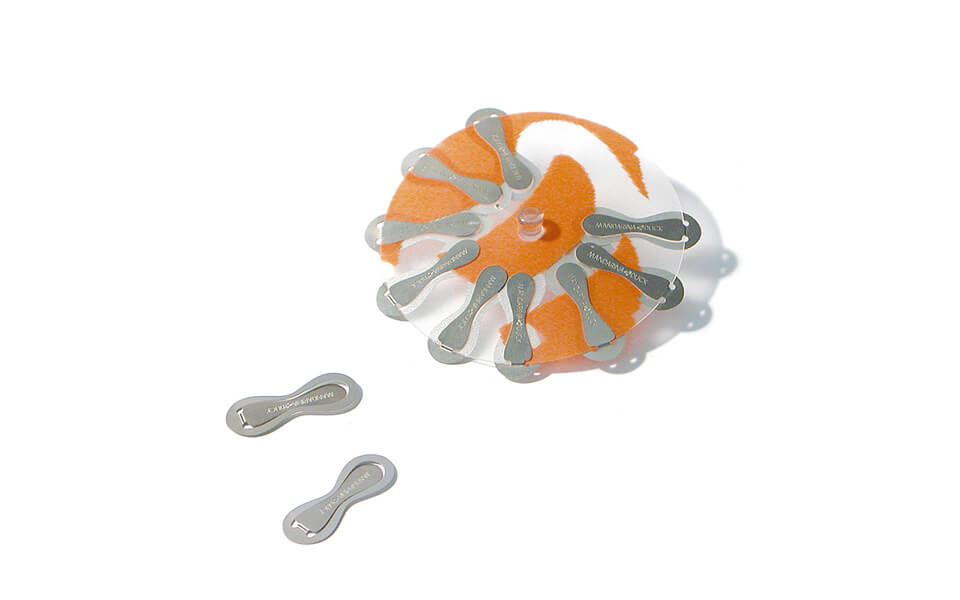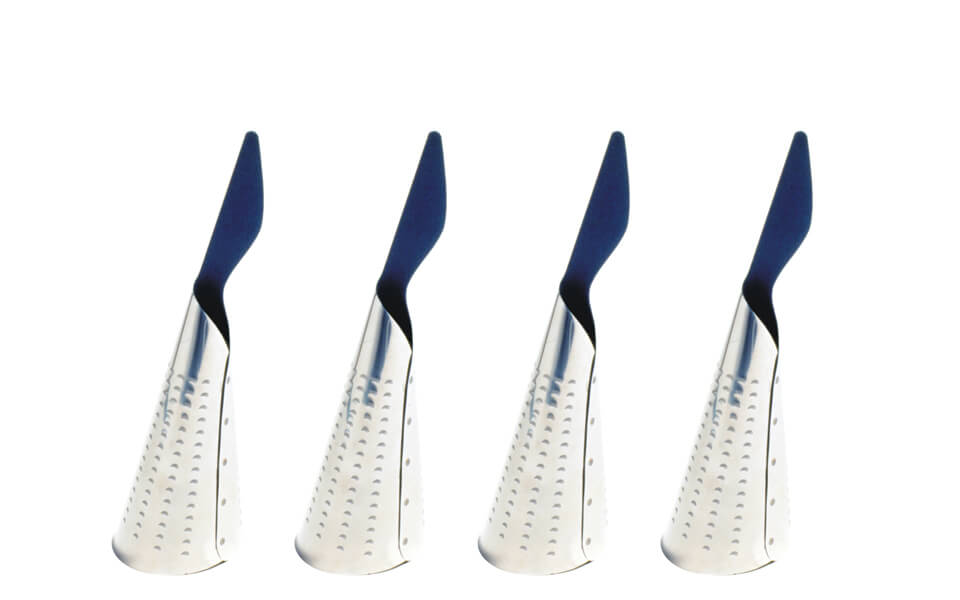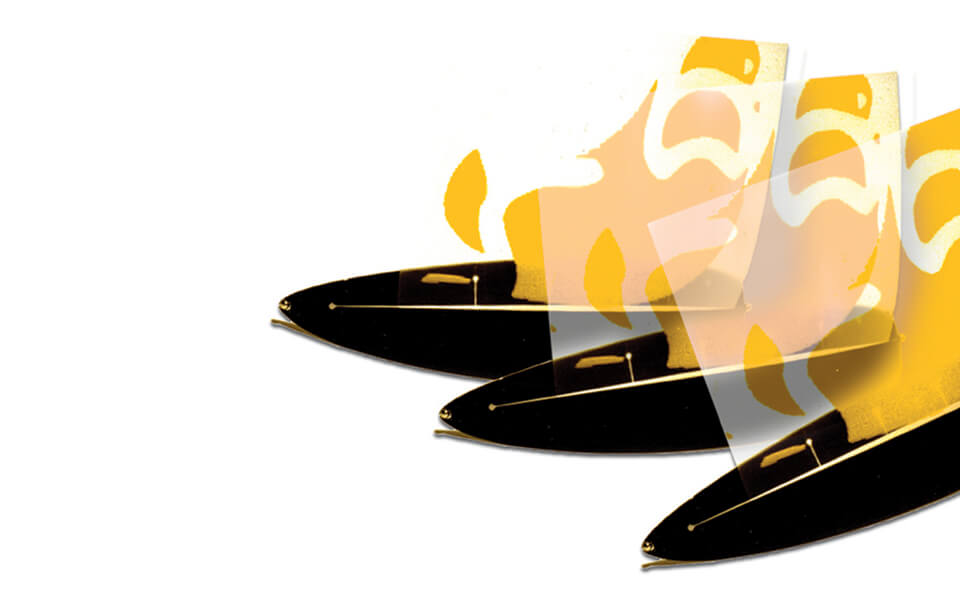STEEL COLLECTION
The idea was to create objects that would be small machines. A thin sheet of steel could easily be used to make a series of two- or three-dimensional objects by exploiting the properties of sheet steel, its flexibility and toughness.
Project description
This project was one of our first, developed in 1998 for Mandarina Duck with our friend Ilaria Gibertini. Here we were intrigued by a technology boosted by the development of electronics to make electronic cards and printed circuits. It was electric discharge machining (EDM). EDM is a manufacturing technique which works by slicing off fine shavings using electric discharges instead of physical-mechanical rotating tools. This unusual principle can be used to obtain any geometrical or volumetric pattern on strongly conducting materials like metals. It is possible to obtain sharp corners and cavities with forms or profiles impossible with other technologies.
At that time Mandarina Duck wanted a design for writing desk accessories that did not call for investing in mold and dies. The technology was perfect for the purpose. The idea was to create objects that would be small machines. A thin sheet of steel could easily be used to make a series of two- or three-dimensional objects by exploiting the properties of sheet steel, its flexibility and toughness. The technology also made it possible to pattern the surface by etching the material for only half its thickness. This was interesting not just aesthetically but for practical purposes. Using a single sheet to make an object solves certain problems.
[one_half_last]For example at some points you need softness and at others greater toughness. So EDM was also used for functional reasons. In the paper knife, for example the decoration of the cone that serves as a grip means we could have a soft and pleasant grip together with a tough blade. The flexibility of the thin sheet made it possible to work with joints cut directly in the material, easily creating 3D objects. One side of the objects was plain steel and the other was finished with a colored etching to create a soft feel. The objects were: paper knife, adhesive-tape holder, photo-holder, bookmark, card-holder, and a suction cap to hold paper clips. The packaging was experimental. It had to be compact and economical. The skinpack is an interesting packaging system where the product is placed on a cardboard base and the air vacuumed out, so the plastic film adheres to the cardboard completely swathing the whole product. But it failed to convince us because it made the product look cold. So we went to a transformer and saw that felt behaved in the same way as cardboard. We then devised a pack that for the first time coupled felt and plastic. One pleasant advantage was that on opening it the felt separated from the plastic and could be used to polish up the steel. Subsequently we also designed small Christmas packages for Mandarin Duck.
The project won the 1999 Young & Design Prize at Salone del Mobile.
TYPOLOGY: office accessories
COMPANY: Mandarina Duck
DATE: 1998
EXHIBITIONS:
Triennale Design Museum – “the new Italian design” 2007
AWARDS:
Young & Design Awards 1999












